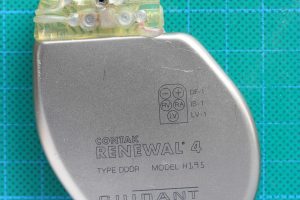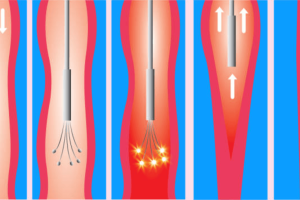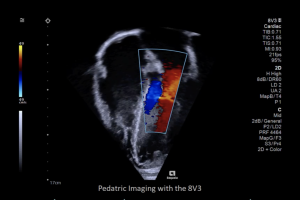The heart never takes a break. The heart is a strong muscle that never stops exercising, not for a minute. Every minute it needs blood, nourishment and oxygen. At Amarillo Heart Institute, we understand the importance of keeping your heart healthy and functioning at its best. We believe that a healthy heart is the foundation of a healthy life, and our goal is to provide you with all you need to achieve optimal heart health, a happier heart.
Ventricular Tachycardia Ablation
Ventricular tachycardia ablation is a minimally invasive procedure used to treat a type of arrhythmia called ventricular tachycardia (VT). VT is a potentially life-threatening heart rhythm disorder characterized by a rapid, irregular heartbeat that originates in the ventricles, the lower chambers of the heart.
During a VT ablation procedure, a thin, flexible catheter is inserted through a small incision in the groin and guided up to the heart. The catheter is equipped with a special electrode that can deliver radiofrequency energy (radiofrequency ablation) to destroy the abnormal tissue causing the arrhythmia.
Ventricular Tachycardia Ablation Procedure
The procedure is performed under local anesthesia with conscious sedation or general anesthesia, depending on the preference of the patient and the electrophysiologist performing the procedure. The patient’s heart rate and rhythm are continuously monitored throughout the procedure to ensure safety and effectiveness.
Preparation: Before the procedure, the patient will be given medication to help them relax and prevent pain. The patient will be connected to monitors to track their heart rate and blood pressure.
Insertion of catheter: A small incision will be made in the groin, and a catheter will be inserted through the incision and threaded up to the heart.
Mapping: Once the catheter is in place, the electrophysiologist will use it to map the electrical activity of the heart and identify the location of the abnormal electrical tissue causing the arrhythmia.
Radiofrequency Ablation: Once the location of the abnormal tissue is identified, the catheter will be used to deliver radiofrequency energy to destroy the tissue. This process is repeated until all the abnormal tissue is destroyed.
Evaluation: After the ablation is complete, the electrophysiologist will evaluate the success of the procedure by monitoring the patient’s heart rate and rhythm. The catheter will be removed, and the incision will be closed with sutures or adhesive bandages.
additional info
Candidates for VT Ablation: VT ablation is typically recommended for patients who have recurrent episodes of VT that are not well-controlled with medication or ICD therapy. The procedure may also be recommended for patients who are unable to tolerate medication or ICD therapy due to side effects.
Preparation for VT Ablation: Before the procedure, the patient will undergo a series of tests to evaluate the structure and function of the heart. These tests may include an electrocardiogram (ECG), echocardiogram, cardiac MRI, or cardiac catheterization.
The patient will also be instructed to avoid eating or drinking anything for several hours before the procedure. In some cases, the patient may need to temporarily stop taking certain medications before the procedure.
During VT Ablation: VT ablation is typically performed under conscious sedation or general anesthesia. The procedure usually takes several hours to complete, depending on the complexity of the arrhythmia and the location of the abnormal tissue.
The procedure is performed by an electrophysiologist, a doctor who specializes in the diagnosis and treatment of heart rhythm disorders. The electrophysiologist uses a special catheter, which is guided through the blood vessels to the heart.
The catheter is equipped with a tip that can deliver radiofrequency energy, which is used to destroy the abnormal tissue causing the arrhythmia. The electrophysiologist uses advanced mapping techniques to locate the abnormal tissue, and then delivers energy to destroy it.
After VT Ablation: After the procedure, the patient is usually monitored in a recovery area for several hours to ensure that there are no complications. The patient may experience some discomfort or soreness at the site of the catheter insertion.
Most patients are able to go home on the same day as the procedure, although some may need to stay overnight in the hospital for observation. The patient may need to avoid certain activities or medications for a period of time after the procedure, depending on the individual circumstances.
Success Rate of VT Ablation: The success rate of VT ablation varies depending on the underlying cause of the arrhythmia, the location of the abnormal tissue, and other factors. In general, the success rate of VT ablation is around 70-80%. Repeat procedures may be necessary in some cases to achieve a successful outcome.
Complications of VT Ablation: Like any medical procedure, VT ablation carries a risk of complications. The most common complications include bleeding, infection, and damage to surrounding structures. However, serious complications are rare, occurring in less than 1% of cases. The electrophysiologist will discuss the potential risks and benefits of the procedure with the patient before it is performed.










